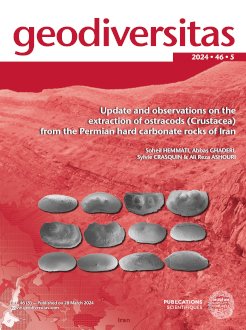Ostracod (Crustacea) fossils can only be determined by observation of the carapace and for this they have to be extracted from the rocks. Generally, in Late Palaeozoic rocks, these microfossils are preserved in hard limestones. The most common method of their extraction is hot acetolysis. We test here two other methods for ostracod extraction from the Guadalupian - Lopingian (Late Permian) Ali-Bashi section in the Northwest of Iran. The samples were prepared with cold 10% formic acid (CH2O2) or 15% acetic acid (CH3COOH). The CH2O2 protocol was productive with well-preserved ostracods, allowed us to determine ten taxa as Bairdia deducta deducta (Zalányi, 1974), Bairdia hungarica Zalányi, 1974, Bairdia sp., Fabalicypris parva Wang, 1978, Fabalicypris sp. 1, Fabalicypris sp. 2, Hollinella (Hollinella) herrickana (Girty, 1909), Hollinella sp., Sargentina transita (Kozur, 1985) and Silenites sp. Amongst these assemblages, Hollinella (Hollinella) herrickana (Girty, 1909), Fabalicypris sp. 2, Sargentina transita (Kozur, 1985) and Silenites sp. were obtained exclusively through the diluted CH2O2 protocol from the hard dolomitized limestones, while the other hot and cold procedures were unsuccessful.
Mise à jour et observations sur l'extraction des ostracodes (Crustacea) des roches carbonatées dures du Permien d'Iran.
L'identification des fossiles d'ostracodes (Crustacea) dépend exclusivement de l'observation de leur carapace, ce qui requiert leur extraction des roches. Généralement, dans les couches du Paléozoïque supérieur, ces microfossiles sont préservés au sein de calcaires compacts et durs. L'acétolyse à chaud demeure la méthode la plus usitée pour leur récupération. Dans cette étude, nous explorons deux autres approches d'extraction des ostracodes de la coupe d'Ali-Bashi d'âge Guadalupien-Lopingien (Permien supérieur), située au nord-ouest de l'Iran. Les échantillons ont été préparés en utilisant à froid une solution d'acide formique à 10% (CH2O2) ou d'acide acétique à 15% (CH3COOH). Le protocole à base de CH2O2 s'est révélé efficace en fournissant des spécimens d'ostracodes remarquablement bien préservés, permettant ainsi l'identification de dix taxons: Bairdia deducta deducta (Zalányi, 1974), Bairdia hungarica Zalányi, 1974, Bairdia sp., Fabalicypris parva Wang, 1978, Fabalicypris sp. 1, Fabalicypris sp. 2, Hollinella (Hollinella) herrickana (Girty, 1909), Hollinella sp., Sargentina transita (Kozur, 1985) et Silenites sp. Parmi ces ensembles, les spécimens de Hollinella (Hollinella) herrickana, Fabalicypris sp. 2, de Sargentina transita et de Silenites sp., ont été exclusivement obtenus à l'aide du protocole de CH2O2 dilué à partir des calcaires dolomitisés indurés, tandis que les autres méthodes, qu'elles soient à chaud ou non, ont été infructueuses.





